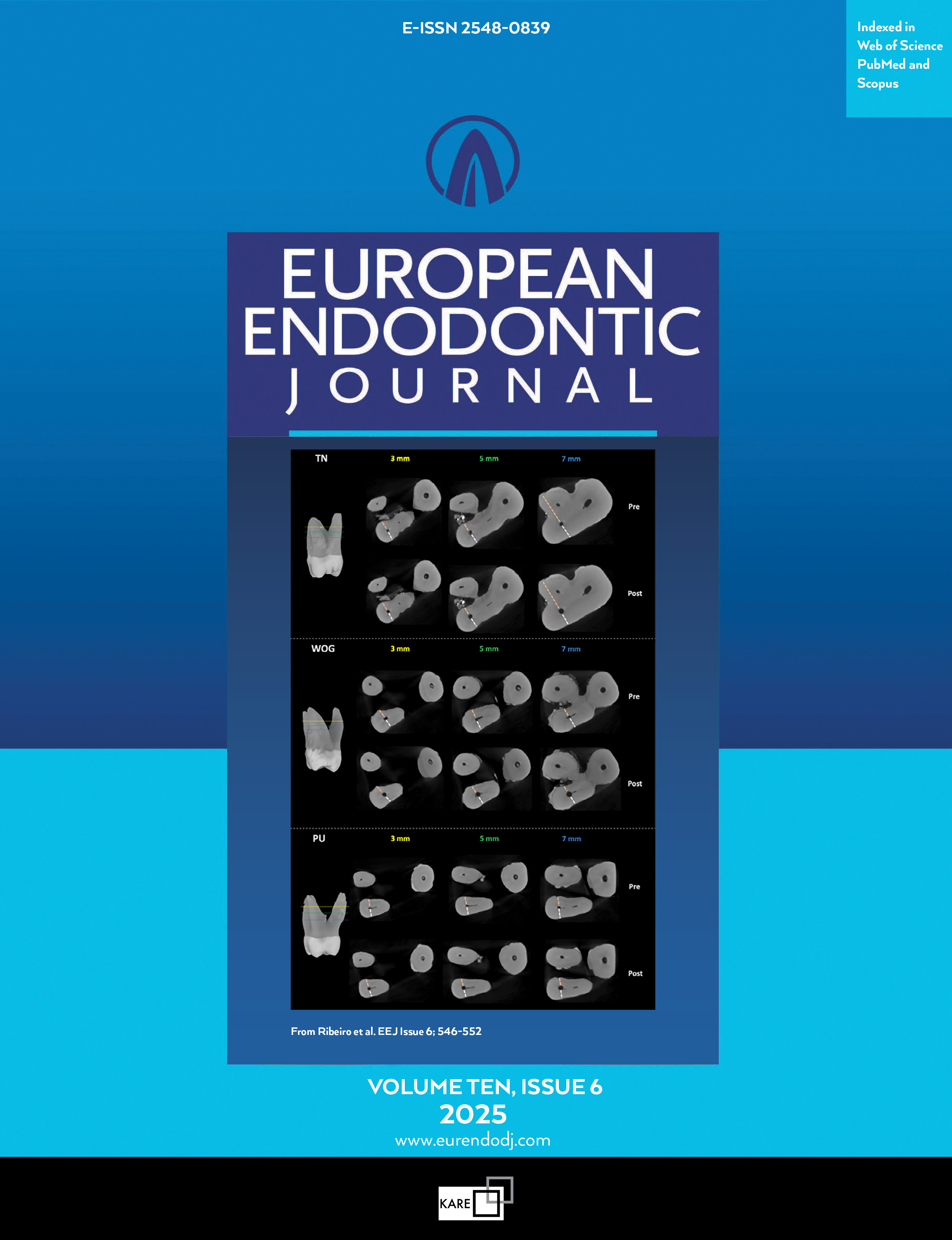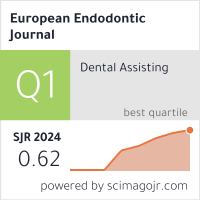Metrics
2024 IMPACT FACTOR
5 year Impact Factor
Eigenfactor Score
2024 CiteScore
Journal Citation Reports
(Clarivate 2025, JIF Rank)
The Effect of High-intensity Focused Ultrasound on Intracanal Bacterial Reduction, Chemical Structure, and Mechanical Properties of Root Dentine
Sheetal Maria Rajan1, Barsha Shrestha1, Mostafa M. A. Elkholy1, Hany Mohamed Aly Ahmed2, Amr Fawzy11UWA Dental School, The University of Western Australia, Nedlands, Australia2Department of Restorative Dentistry, University of Malaya, Faculty of Dentistry, Kuala Lumpur, Malaysia
Objective: High-intensity focused ultrasound (HIFU) has demonstrated significant efficacy in eradicating bacteria from substrates emerging as a promising solution for root canal disinfection. This in-vitro study investigated the effects of HIFU on reducing intracanal bacteria and its impact on the chemical and mechanical properties of root dentine. It also aimed to demonstrate acoustic wave penetration and distribution within the root canal system (RCS) and characterize the associated temperature changes.
Methods: Eighty-two extracted premolar teeth with single canals, infected with Enterococcus faecalis (E. faecalis) and cultured for two weeks, were randomly assigned to four groups: negative control, 4% sodium hypochlorite (NaOCl), 60 s HIFU, and 120 s HIFU (operated at 250 kHz/20W). Post-treatment, biofilm samples were collected from the root canals to assess viable bacterial cells using colony-forming unit (CFU) and 3-[4,5-dimethylthiazol-2-yl]-2,5 diphenyl tetrazolium bromide (MTT) assays. The root canal surfaces were subsequently examined using scanning electron microscopy, confocal laser scanning microscopy (CLSM), microhardness, and Raman spectroscopy. Acoustic wave penetration, distribution, and temperature changes within the RCS were examined using CLSM and thermal camera.
Results: HIFU at 60 s and 120 s consistently demonstrated superior anti-bacterial efficacy against E. faecalis biofilms compared to 4% NaOCl. MTT and CFU assays revealed a significant reduction in biofilm viability, particularly at 120 s of HIFU exposure (p<0.05). CLSM and SEM analyses demonstrated enhanced penetration and detachment of biofilms, as well as improved smear layer removal and preservation of dentinal tubules, especially at 120 s of HIFU exposure. HIFU treatment did not adversely affect the amide/mineral content of root dentine or its surface microhardness. Additionally, HIFU enhanced acoustic wave propagation and resulted in a controlled increase in temperature within the root canal over time.
Conclusion: This minimally invasive approach shows promise for removing bacterial biofilms in the RCS, positioning HIFU as a valuable adjunctive treatment for enhancing root canal disinfection. (EEJ-2024-08-123)
Keywords: Acoustic wave, bacterial reduction, Enterococcus faecalis, high-intensity focused ultrasound (HIFU), root dentine, sodium hypochlorite
Manuscript Language: English
(598 downloaded)



